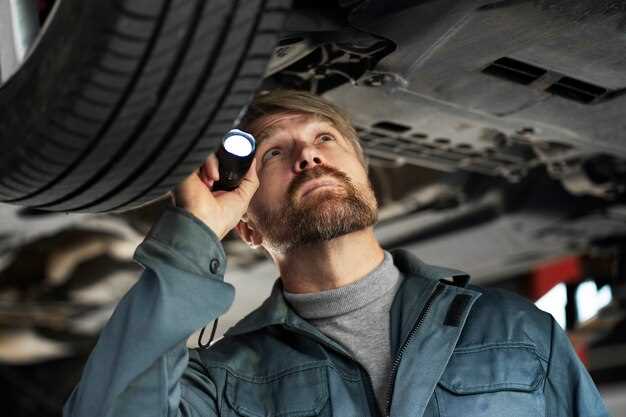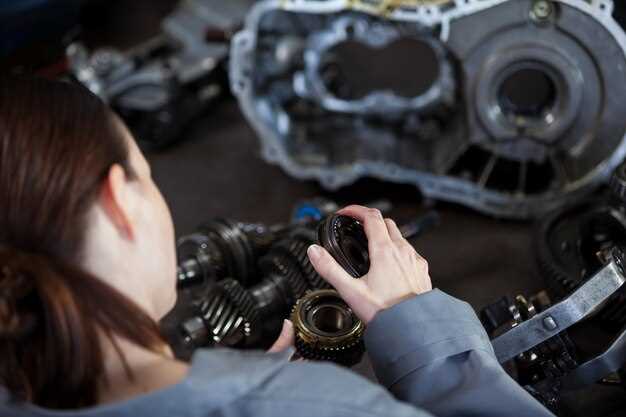How to Prevent Overheating in Turbocharged Engines


Turbocharged engines have become increasingly popular in modern vehicles due to their ability to deliver high performance and improved fuel efficiency. However, with this enhanced power comes the risk of overheating, which can lead to significant engine damage if not properly managed. Understanding the factors that contribute to turbocharger overheating is crucial for any car owner or enthusiast looking to maintain their vehicle’s longevity and performance.
Overheating in turbocharged engines can be attributed to several key factors, including inadequate cooling system performance, improper oil supply, and excessive engine loads. Therefore, it is essential to implement preventative measures that address these issues proactively. By following a few essential tips, you can help ensure that your turbocharged engine remains within safe operating temperatures, thus safeguarding its performance and reliability.
In this article, we’ll explore effective strategies for preventing turbocharged engine overheating. These tips not only focus on routine maintenance but also emphasize the importance of understanding your vehicle’s specific requirements. Whether you’re a seasoned mechanic or a novice driver, these insights will provide you with the necessary knowledge to keep your turbocharged engine running smoothly and efficiently.
Understanding Turbocharger Functionality and Heat Generation
A turbocharger is a forced induction device that increases an engine’s efficiency and power output by forcing additional air into the combustion chamber. It operates using a turbine and a compressor, where the exhaust gases from the engine spin the turbine, which in turn drives the compressor to draw in and compress ambient air before it enters the engine. This process allows for a denser air mixture, leading to improved combustion and enhanced performance.
However, the operation of a turbocharger generates significant heat. The primary source of this heat is the exhaust gases that spin the turbine. These gases can reach extremely high temperatures, sometimes exceeding 1,000 degrees Fahrenheit (537 degrees Celsius). This not only raises the temperature of the turbocharger itself but also affects surrounding components and the overall engine temperature.
Moreover, increased pressure in the intake manifold can lead to higher compression ratios, which also contribute to heat generation. The heat created must be effectively managed to prevent overheating, which can result in engine knocking, reduced performance, and potential engine damage. Therefore, it is crucial for vehicle owners to understand the heat dynamics of turbocharged engines and take appropriate measures to ensure effective cooling and thermal management.
Regular Maintenance: Key Fluids and Components to Check
Regular maintenance is essential for preventing overheating in turbocharged engines. Below are the key fluids and components that should be monitored and serviced consistently to ensure optimal engine performance and longevity.
| Component or Fluid | Importance | Recommended Action |
|---|---|---|
| Engine Oil | Lubricates engine parts, reduces friction and heat buildup. | Check level and quality; change oil according to manufacturer guidelines. |
| Coolant | Cools engine components and prevents overheating. | Inspect coolant level and condition; flush and replace every 2-3 years. |
| Turbocharger Oil Supply | Ensures proper lubrication for optimal turbo performance. | Check oil flow and quality; replace worn lines and filters as needed. |
| Radiator | Disperses heat from coolant to maintain optimal temperature. | Inspect for leaks and clogs; clean or repair as necessary. |
| Thermostat | Regulates engine temperature by controlling coolant flow. | Test for proper operation; replace if stuck open or closed. |
| Water Pump | Pumps coolant throughout the engine and radiator. | Check for leaks and noise; replace if worn or inefficient. |
| Air Filter | Ensures clean air flow to maintain efficient combustion. | Inspect and replace regularly to prevent engine strain. |
| Fuel System | Delivers fuel efficiently for optimal power and combustion. | Check fuel filter and injectors; service as per manufacturer recommendations. |
Following these maintenance guidelines will help prevent overheating issues in turbocharged engines, ensuring they operate smoothly and efficiently.
Upgrading Cooling Systems for Enhanced Performance
Turbocharged engines generate significant heat due to increased combustion pressure and higher RPMs. An efficient cooling system is essential to manage this heat, ensuring optimal performance and longevity. Upgrading your cooling system can prevent overheating and maintain engine efficiency.
High-Performance Radiators are a crucial upgrade. Unlike stock radiators, high-performance options often feature larger cores and enhanced airflow designs. This allows for better heat dissipation and reduced engine temperatures during demanding conditions.
Another important component is the upgraded water pump. A high-flow water pump can increase coolant circulation, ensuring that heat is quickly extracted from the engine block. This not only keeps temperatures in check but also improves overall engine responsiveness.
Oil Coolers are essential for maintaining optimal oil temperatures. By routing engine oil through an external cooler, you can minimize the risk of thermal breakdown, thereby maximizing lubrication and reducing engine wear. This is particularly beneficial during high-stress driving situations.
Installing performance thermostats can also enhance cooling efficiency. These thermostats open at lower temperatures, allowing coolant to flow sooner and reducing the chance of overheating. When paired with upgraded radiator and water pump systems, the benefits multiply.
Finally, consider using high-quality coolant with improved thermal properties. Specialized coolants can offer better heat transfer compared to standard fluids, providing additional protection against overheating while allowing the engine to run more efficiently.
By incorporating these upgrades, turbocharged engines can achieve better cooling performance, thereby enhancing overall functionality and extending the lifespan of the engine components.
Monitoring Engine Temperature: Tools and Techniques

Maintaining optimal engine temperature is crucial for preventing overheating in turbocharged engines. Various tools and techniques can help monitor the engine temperature effectively.
Here are some of the most effective methods and tools:
- Dashboard Gauge: Most vehicles come with a temperature gauge that provides real-time information on engine temperature. Regularly observe this gauge for any signs of overheating.
- OBD-II Scanner: An On-Board Diagnostics (OBD-II) scanner can be connected to your vehicle’s diagnostic port. This tool provides detailed data about engine performance, including temperature readings.
- Aftermarket Temperature Gauge: Installing an aftermarket gauge can offer more precise monitoring. These devices can be integrated into the vehicle’s dashboard, providing immediate and accurate readings.
In addition to tools, specific techniques can enhance your temperature monitoring efforts:
- Regular Inspections: Conduct routine checks of your coolant levels, radiator, and hoses. Low coolant levels or damaged hoses can lead to overheating.
- Pre-Drive Checks: Before starting your engine, check the dashboard gauges and ensure that the engine is at a normal operating temperature.
- Data Logging: Utilize data logging tools that record temperature metrics over time. This allows for pattern recognition and identification of potential overheating issues.
By employing these tools and techniques, you can effectively monitor engine temperature and take early corrective actions to prevent overheating in your turbocharged engine.
Driving Habits That Reduce Overheating Risks
Maintaining optimal driving habits is crucial for preventing turbocharged engine overheating. One essential practice is to avoid aggressive driving, including rapid acceleration and high-speed driving, which can place excessive strain on the engine and its cooling system. Smooth acceleration and gradual speed increases allow the engine to operate within its designed temperature range.
Regularly monitoring engine temperature can also help in preventing overheating. Keep an eye on the temperature gauge; if it consistently approaches or exceeds the normal range, it’s prudent to reduce speed and give the engine a chance to cool down. Additionally, avoid idling for prolonged periods, as this prevents proper airflow through the engine and can lead to overheating.
Planning routes to avoid heavy traffic and long stops contributes to better cooling. Stop-and-go driving can generate excessive heat, so choosing less congested routes can help maintain stable engine temperatures. Moreover, incorporating coolant management practices is vital. Before driving, ensure that the coolant levels are adequate and that the cooling system is in good condition.
Lastly, using higher gears when possible can reduce engine strain during highway driving, helping to minimize heat buildup. Shift into a higher gear to keep the engine RPM lower, thereby reducing the likelihood of overheating during long drives. Adopting these driving habits can significantly diminish the risk of turbocharged engine overheating, leading to enhanced performance and longevity of the vehicle.
Identifying Signs of Potential Overheating Issues
Recognizing the early signs of overheating in a turbocharged engine is crucial for preventing extensive damage. One primary indicator is the temperature gauge on the dashboard. An unusually high reading can signify that the engine is operating outside of its normal temperature range. Regular monitoring of this gauge is essential for early detection.
Another critical sign is a decrease in engine performance. If the turbocharged engine seems sluggish or unresponsive, it may be struggling with overheating. Additionally, any unusual noises, such as knocking or pinging, could indicate severe issues that may stem from excessive heat within the engine.
Inspecting the exhaust system is also vital. If you observe excessive smoke or a sweet smell, it may mean coolant is leaking into the combustion chamber due to overheating. This can lead to serious engine damage if not promptly addressed.
Furthermore, keep an eye out for visible fluid leaks under the vehicle. Coolant leaks can lead to insufficient cooling, increasing the risk of overheating. Regularly checking the coolant levels and maintaining proper fluid characteristics can help prevent problems before they escalate.
Lastly, pay attention to warning lights on the dashboard. Many modern vehicles are equipped with sensors that alert drivers when the engine is at risk of overheating. Ignoring these warnings can result in catastrophic engine failure, so it’s essential to take immediate action if any indicators illuminate.
